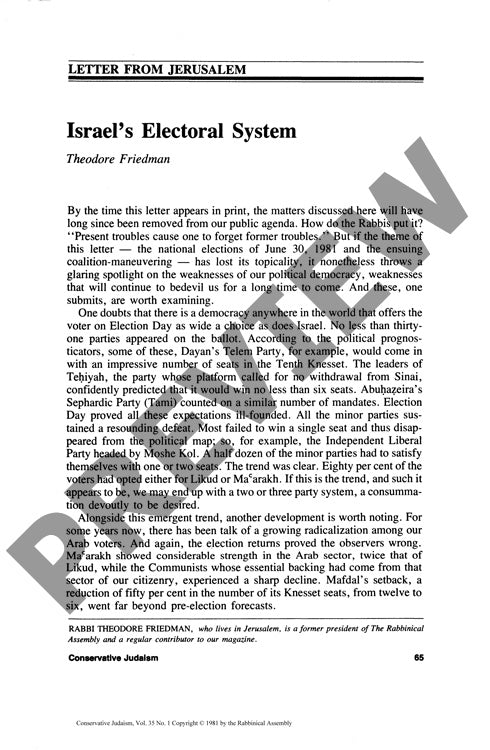Israels Electoral System Letter from Jer
Couldn't load pickup availability
Israel's 1981 national elections revealed a striking paradox: as voters consolidated around two major parties, the system's smallest factions gained unprecedented political leverage. Through analysis of electoral outcomes, party performance, and coalition negotiations following the June 30 vote, clear patterns emerged showing both democratic evolution and systemic vulnerabilities. While thirty-one parties competed, eighty percent of voters supported either Likud or Macarakh, suggesting a natural drift toward a two or three-party system. Yet the razor-thin margin between major parties (Likud 48, Macarakh 47 seats) amplified the influence of religious parties despite their reduced electoral strength. Observational analysis of voting patterns and seat allocation revealed several unexpected developments: Arab voters maintained strong support for Macarakh, contradicting predictions of radicalization; ethnically-based parties gained new footholds; and demands for religious legislation threatened the long-standing "status quo" arrangement between secular and Orthodox interests. The evidence demonstrates how Israel's system of total proportional representation enables well-organized minorities to impose their will on the majority, creating systemic instability and deepening Orthodox-secular divisions.

More Information
-
Physical Description
-
Publication Information
Published 1981
ISBN
-
Publication Credits
Theodore Friedman

